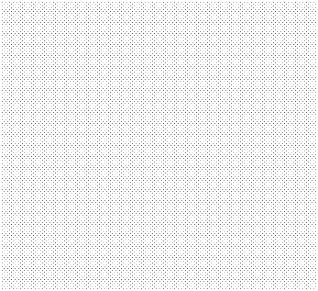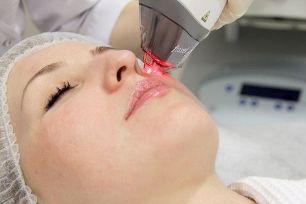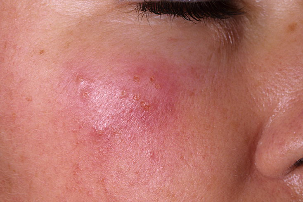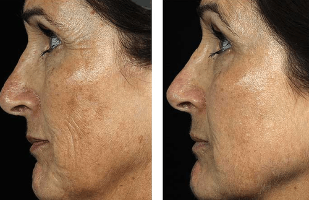Laser rejuvenation with Fraxel can solve many skin problems. The technology is already widespread, almost displacing other anti-aging laser equipment. The secret of such popularity is that the fractional laser is safer than the conventional one.
What is Fraxel Laser Rejuvenation

Fraxel technology was developed in the United States in 2004. At that time, the possibility of rejuvenation with the help of laser light was already known. But the developers of the new method went further: they changed the structure of the laser beam. Instead of a narrowly directed beam of light, several hundred microbeams of different lengths were applied to the skin at once.The conventional laser heats the entire illuminated area, the fractional laser acts in a targeted manner, burning stem channels in the skin no more than 0, 1 mm wide and 0, 4 to 1, 9 mm deep.For 1 cm2skin can have up to several thousand such fractions - the damaged areas alternate with intact. In the language of cosmetologists, the areas that have been exposed to radiation are called microthermal treatment areas.
Unlike other lasers with punch technology, Fraxel shines evenly through all micro-areas of the skin at a distance of hundreds of millimeters.
There are several techniques for fractional rejuvenation, as manufacturers have taken into account that people age differently - each type of aging has its own specific changes associated with age. As a source, technology developers have taken two types of lasers - erbium and thulium.
The erbium laser acts on the upper layers of the epidermis, more precisely on its lipid layer, in which water molecules accumulate and are retained - they are the ones that absorb light energy. Under the influence of high temperature, the water evaporates and the dead cells that make up the upper layer of the skin are burned by a laser. Such an aggressive effect immediately causes a protective reaction of the body - increased metabolism, so that the damaged areas of the skin to recover as quickly as possible. On average, it takes 1-2 weeks to heal microtraumas and up to 3-4 months for complete recovery. The procedure is called ablation or ablative overflow. Once the skin becomes cleaner and lighter, pigmentation spots and keratomas disappear, fine wrinkles are erased. The first generation device with a wavelength of 1550 nm (penetrated shallowly, up to 20-50 microns or 0, 02-0, 05 mm) works on an erbium laser. Then it became clear that even more gentle technology was needed - to treat thin and sensitive skin in the eye / lip area. The wavelength was reduced to 1420 nm.
The thulium laser with a wavelength of 1927 nm is designed to heat the upper layers of the dermis, in which the collagen-elastin network is located. The protein fibers of which they are composed change their structure from thermal action - they fold and condense. If you visualize them: they look like springs - but with age from active facial expressions and under the influence of gravity they lose their elasticity and stand up. With the weakening of the collagen frame, the dermis first loses its tone, then sags and gathers in folds and the upper layer of skin and wrinkles appear. So, from the high temperature, they fold into springs again and over time pull the sagging tissue behind them. In this way, some wrinkles, including deep ones, are smoothed out. The thulium laser is not used separately for fractional rejuvenation. But its energy is effectively combined with that of the erbium laser.
By combining two types of exposure, laser equipment manufacturers have obtained the device - the gold standard of anti-aging cosmetology.
Fraxel laser radiation acts on all layers of the skin, thus helping to solve various age-related problems.
With the advent of powerful CO2 lasers, rejuvenation procedures have become even more effective. The pulses of light in them are amplified due to the fact that they pass through the molecules of carbon dioxide. This technology is used by a laser on which, as well as on erbium, ablative grinding is performed. But the energy of the CO2laser penetrates much deeper - up to 300 microns or 0. 3 mm. The technology allows you to achieve a visible improvement in the quality and texture of the skin: improving the complexion, reducing pores, removing scars and stretch marks, smoothing wrinkles. A dermal optical thermolysis procedure is also performed using a carbon dioxide laser when the radiation affects even deeper layers of the skin.
For fractional laser rejuvenation
Fractional laser rejuvenation is more common among women, although men sometimes use it. The average age of patients is 30-50 years, plus or minus five years to the lower and upper limit. In fact, there are no strict age restrictions, whether it is worth doing rejuvenation with the help of a fractional laser, determines a dermatologist-cosmetologist during a preliminary examination. It's just that at a younger age your metabolism is already quite active, there are still no visible age-related changes, and you can work with problem skin with other, more gentle methods. After 50 years, fractional rejuvenation, on the other hand, may no longer give a noticeable result, as the tissues are deformed quite strongly, surface correction will give a short-term result, and maybe not at all.
When laser grinding is applied:

- with enlarged pores and traces of acne;
- with unhealthy pallor, bad complexion;
- for superficial fine wrinkles;
- for hyperpigmentation and freckles;
- for scars and stretch marks.
Fractional thermolysis is indicated for wrinkles, creases and creases on the face, neck, décolleté, loss of tone and sagging skin.
Women say that after Fraxel the skin looks younger than its age by 3-5 years, although this is not the case for everyone.
Contraindications to the procedure
Any procedures using a fractional laser are contraindicated:
- patients under 18 years of age;
- pregnant and lactating women;
- cancer patients;
- people with heart and vascular diseases;
- diabetics;
- allergy sufferers (your doctor should be warned about allergies to the laser itself or to anesthetics).
It is not recommended to be exposed to the laser if the skin in the area of the procedure is injured, inflamed or covered with a rash, herpes, dermatitis, psoriasisThe procedure can only aggravate the existing problems, so the skin shouldis healthy. Relative contraindications for laser polishing / thermolysis - chemical peeling or facelift performed in the previous month. The possibility of partial rejuvenation in such cases should be checked with a doctor.
Differences of the fractional laser procedure from other types
The possibility of fractional laser rejuvenation was discovered when similar procedures were performed on other lasers - thermolysis was performed on diode and neodymium lasers, the deep layers of the skin were heated, on erbium and long wavelength carbon dioxide wasperformed complete laser restoration. The result was from both procedures, but it took too long. After sanding, surface treatment the skin recovers in a month and a half - not all patients are satisfied with this period. In addition, the risk of side effects remains high. When the possibility of metered supply of light energy appeared, salons began to switch en masse to new technologies - the fractional laser began to be used everywhere.
Even after one procedure, significant changes occur in the tissues, but to consolidate the result, you need to go 3-4 times to cosmetics.
There are also new procedures:
- carbon peel. The upper layer of the skin is treated with a carbon (carbon) gel, and then laser radiation is applied to it - to warm the deep layers of the dermis. The mechanism of action is generally standard - regeneration occurs more intensely than high temperature. But thanks to the laser, the gel also penetrates deep enough: so that even after one session the pores are cleared, the work of the sebaceous glands is normalized, the face becomes cleaner and smoother. The procedure is recommended for patients with oily skin;
- laser biorevitalization is a procedure that has replaced the injection technique. Hyaluronic acid gel is applied to the problem area, after which the skin is treated with a laser - usually a diode. With the discovery of the laser, it became clear that even external agents can penetrate deeper, which means that they can work more efficiently if, after application, the desired area is treated with laser light. This also happens with the molecules of hyaluronic acid - if in an ordinary cream or gel they are absorbed only superficially and washed off after the first cleansing of the face, then after the laser they fall into the deep layers of the epidermis, where all the moisture necessary for the skin accumulates.
What are the advantages and disadvantages of the laser procedure - table
| Pros | Against |
|
|
How to prepare for the procedure
Preparation for fractional rejuvenation begins with a consultation with a dermatologist. After the examination, he should give the green light for the procedure and personal recommendations. Restrictions usually apply to:
- lifestyle. 3-4 weeks before the procedure, you should refuse to visit the solarium and before going out, use a cream with SPF filter;
- taking certain medications - antibiotics, blood thinners that almost every second woman over 30 takes. But to take a cure for herpes, on the contrary, is worth it;
- cosmetic procedures. 2 weeks before the procedure it is recommended not to perform other procedures for cleansing and rejuvenating the face, it is better to give up even home peeling, so as not to hurt the skin again, and to move to gentle care.

You have to come to the salon without makeup.
It is recommended that you do not drink a lot the day before and on the day of the session - so that there is no swelling of the tissues.
If there is a tendency to herpes, it is recommended to take antiviral drugs during the preparation for the procedure.
How to perform the procedure in the salon
Procedure for the procedure:
- The first thing a doctor does is disinfect the skin and apply anesthesia. Anesthesia is usually sufficient for administration.
- A contact gel is then applied, which is needed to make it easier for the laser handle to slide on the skin.
- The nozzles have different diameters: 7x7 mm or 15x15 mm. During one activation, 1-2 cm2of the skin is illuminated, so the session takes quite a bit of time. It takes about half an hour to treat the face and neck and about 10 minutes on the hands.
- Unpleasant sensations usually do not occur during the procedure, but after it, when the anesthesia begins to subside. When the skin is illuminated with a laser, it feels warm, burning and tingling, but bearable; as the burning of micro-areas is perceived more easily than if a directed beam burns the top layer of skin centimeter by centimeter.
What effect will it have after the procedure and when will it appear
On the second or third day after the procedure, when the swelling subsides, a light matte complexion will appear on the skin, the tone will become smoother, the complexion will be refreshed. It takes time for the skin to recover, about a month. After this time you will notice a lifting effect, improving the quality of the skin - that is, increasing its density, elasticity, reducing pores, lightening age spots.To consolidate the result, you need to perform 3-4 procedures at intervals of a month.After another 3-4 months, when the collagen-elastin frame is restored, the face will become even tighter, wrinkles will disappear, the face will look 5 years younger or even more. If all the doctor's recommendations are followed, this condition can be maintained for several years. In salons, they avoid making accurate predictions because no anti-aging procedure repeals the laws of aging.

Judging by the reviews, the result can last up to 3-5 years. Longer is unlikely: irreversible age-related changes may only slow down, but then they will reappear and the course of treatment will have to be repeated.
Patient before and after fractional rejuvenation - photo
What complications can be and how to avoid them
Complications are possible even if the doctor follows the procedure completely. Whether or not they depend on the patient's health condition and the individual reaction to the procedure. The responsibility for performing fractional rejuvenation in the presence of contraindications lies with the patient - if he knew about them, but did not warn the doctor or hid from him important information about the diseases, procedures performed and allergies to drugs.
Almost 15 years of practice show that after partial rejuvenation there can be side effects such as:
- acne;
- herpes;
- age spots;
- persistent reddening of the skin (erythema);
- persistent tissue swelling.
No cases of keloid scars and tumors have been reported.
Rehabilitation period
Immediately after the procedure, patients experience pain and severe tissue swelling. It will be easier if you regularly, every 3-4 hours, apply an ice pack (ice cubes wrapped in a napkin or towel or a frozen bottle of water) on the treated area of skin. You can go out / to work the next day, but it will be better to wait at home for 2-3 days, making compresses and lubricating the skin with a stimulator for tissue regeneration. No physical activity, sunbathing or even a hot shower. Rest, hot shower, cream and compresses - at least 2 days.
Then the skin will heal - first dry crusts form, then they will begin to peel off and fall off.You don't have to touch, let alone tear them off.Alcohol-based cosmetics (lotions, tonics) for the recovery period should be discarded. Decorative cosmetics are allowed 2-3 days after the procedure.
Reviews for fractional laser facial skin rejuvenation
"Anesthetic ointment is applied before the procedure. The ointments are also different. I had a pain relief effect for 15 minutes. The procedure itself follows. The doctor showed me the effect of the laser first on a sheet of paper. The holes are burned at a distance1 mm apart . . Then I was burned . . . The procedure lasted 15 minutes: face and neck. It is unpleasant but quite bearable. The problems start when the effect of the anesthetic ointment is over. It is a simple burn, and the consequences are the same as inburns. The whole face is red, swollen, burns. Therefore, the procedure is recommended to be done on Friday night. The doctor gave the following instructions: apply plenty and often with ointment for burns. First, it is better to use an ointment that contains cooling. A lot of brown crusts formed in the places of burning, but the procedure is good, because on the second day you can use decorative cosmetics and cover everything. to take a bath or go to the bathroom. Massage the steamed face with your fingertips so that the crusts fall off. Do not use scrub! The effect increases gradually. After the first procedure, the oval of the face was tight, the vessels around the nose had disappeared. For the full effect, my doctor prescribed me 4 procedures with a break per month. Keep in mind that Fraxel is easier for brunettes because it is similar to sunburn. "
"I did DOT laser rejuvenation. Day 1. The procedure is painful. I was anesthetized for an hour. But it still hurts. It smells like burnt meat. Immediately after the procedure the appearance is normal, only swollen eyes. The face hurts for 2-3 hoursThe evening begins, to put it mildly, swelling . . . The look of a homeless woman from three stations Day 2. In the morning there is horror! No pain But the look of a Tajik and a man The skin darkens The eyes narrow The face is very swollenBy evening, her eyes gradually opened. Herpes 2 crawled on her lower lip. The doctor warned me that if the herpes lived in the body, it would definitely come out. So got away. Beauty is impossible . . Day 3. No pain. The swelling slowly subsides. Bark on the face. Look scary. Day 4. Bark gradually begins to disappear. No pain. The face is strange but not terrible. Day 5. Bark separates. The face is pink, like after a strong sunburn. The skinis like a baby. Eats everything that can not be offered in huge quantitiesAllcreams, all masks under the broom. His lips healed. On the 9th day - a feast for the eyes! try in the mirror, do not see enough. Turgor is completely different. Under the eyes (my sore spot) everything is smooth. Not a single wrinkle. I don't know what will happen next. But for today, the 10th day, I am VERY happy. "
"I was lucky enough to own the most difficult to treat facial scars. Namely cut and boxes. If anyone doesn't know, these scars are characterized by sharp ragged edges. I started this epic 4 years ago with their treatment. I knewfor the variety of different methods and I succumbed to the doctor's conviction to do a fractional laser recovery of the Dot device. By the way, the doctor promised to make me a perfectly smooth face in 3 procedures. In intellectual terms I realized that this is impossible. After allI have complicated scars But hope was burning in me The day of the first procedure has come Oh God it was hellishly painful The smell of burnt skin was still coming to an end I had to sit at home without going out for about a week, endlessly smearing my face with a stimulantfor tissue regeneration and to be afraid of my reflection in the mirror, because there they showed Krueger in female form. After 6-7 days I was already at risk of going out in public. your place. To my surprise, my whole face turned into a small hole. These were traces of a laser. I didn't expect that! They promised perfect smoothness. And in the end they added irregularities. Well, fine, I thought, and went to the second procedure. And then the third. Personally, my eyes are dazzled by such smoothness. I don't think anything has changed! The traces in the form of a laser grid, by the way, are still with me. They are not astounding, but if you look closely, you can see them. I take them out cunningly with ultrasonic massage, mesoroller and peeling. And I'm no longer on Dot! It's absolutely crazy for my type of scar! "
Fractional rejuvenation certainly has many advantages. But there are negative reviews from patients, there are cases when even one procedure has caused health problems to people. This happens for various reasons, often due to contraindications for laser rejuvenation in general. To protect yourself from possible negativity after the procedure, play it safe beforehand - go to the doctors, do tests, listen to not one, but several cosmetologists. Yet safety and health are two inseparable things.






































